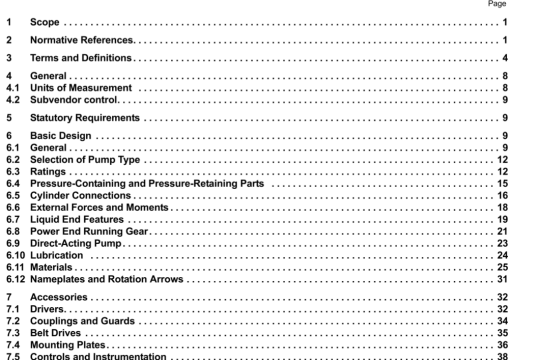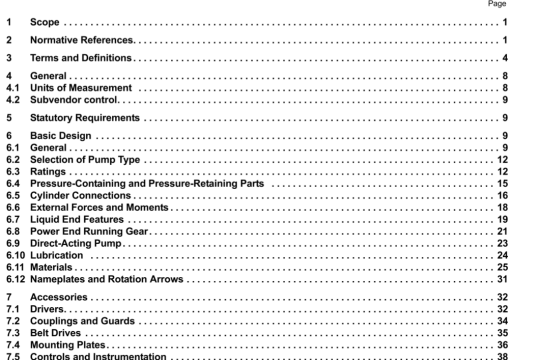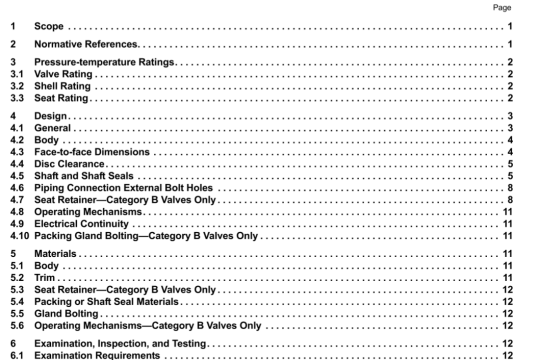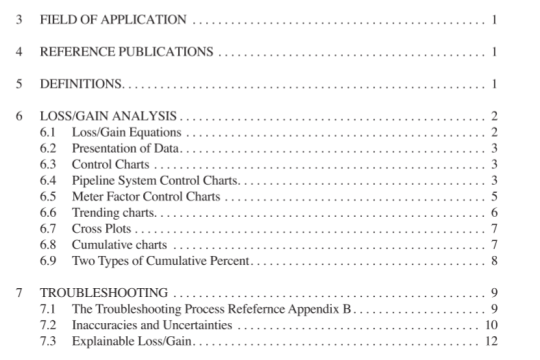API RP 1117:2008(2013) pdf download
API RP 1117:2008(2013) pdf download.Recommended Practice for Movement in In-service Pipelines.
Conclusion: The minamum trench length required to achieve the desired 5-ft vertical detection of the pipe is 510 ft. The pipeline must be supported every 51.3 ft.
5 Procedure Considerations
5.1 General
A pipeline-moving project has three steps. which are to be performed in the following order:
a) project planning:
b) the actual work of ditching, moving. backfihling, and cleanup; and
C) documentation to meet pipeline-operator and regulatory requirements
Each of the consideration discussed m this section should be taken into account in at least one of these steps.
5.2 Safety Precautions
Caution—For safety, the cautions and recommendations described In 5.2.2 through 5.2.7 should be considered and followed.
5.2.1 General
5.2.2 Internal Operating Pressure
Prior to the pipe movement, the nternai operating pressure of the pipeline should be reduced in accordance with the pipeline operators’ procedures and applicable regulations.
5.2.3 PIpeline Location
Pnor to planning and excavation, the location of the pipeline, induding its depth, should be determined.
5.2.4 Other Underground Facilities
Pnor to planning and excavation, efforts should be made to determine whether underground faclities may be encountered and, if so. where the facilities are located. The construction area should be checked for utility markers and other evidence of underground facilities. If available, state or local “One CaIr systems should be accessed Otherwise, operators of such underground facilities should be contacted cWectly so they may locate and mark thew facilities. All contacts should be documented.
52.5 GIrth Weld Inspection
If available, pipe mill test reports and welding Inspection records should be reviewed. In addition, consideration should be given to the visual and nondestructive inspection of girth welds once the pipeline is exposed and prior to movement should be considered.
52.6 Attached Appurtenances
Attachments to the pipeline such as fittings or valves may affect the pipelme movement. Their effect on the movement should be considered. The movement of pipelines with attached appurtenances is beyond the scope of this recommended practice (see 1.2).
5.2.7 Excavation Safety
Excavation presents some unique safety considerations. lt should be performed in accordance with the pipelineoperators’ procedures and applicable safety regulations.Refer to OSHA trenching and excavation regulations.
5.3Terrain
Terrain refers primarily to the profle of the ground where the pipeline is located. Terrain affects a pipeline movementprimarily by influencing the length of the trench required to move the pipeline.
In flat or gently roling terrain, a pipeline is often laid by elastically conforming it to the terrain profile. In this case , themovement should be executed to minimize additional stress in the pipeline.
Caution—ln flat or gently rolling terrain, to limit additional stress and ensure the safe movement of thepipeline, it may be necessary to excavate a longer trench than that required by the trench length equation.
In mountainous or hilly terrain, the pipeline may have permanent overbends or sag bends. In such cases, the physicalprofile for the moved pipeline should incorporate these bends.Movement operations on the pipeline should beexecuted to prevent the alteration of these bends.
Caution—To maintain safe conditions in difficult terrain such as that found in mountains and hills, movementoperations should be treated as special cases and may require a detailed engineering analysis and the use ofspecialized construction techniques.
5.4Soil
The soil type may determine the cross-sectional shape of the excavation and how the pipeline will be handled overthe ditch.
5.5Other Considerations
Caution—All pipeline movement projects should be executed with caution. If the pipeline is in tension andlittle or no slack is available, the movement will subject the pipe to additional stress due to the weight of thepipe, the weight of the fluid in it, and to seasonal temperature changes.Particular care should be taken inolder pipelines in which the pipe connections may be mechanically weak.
For pipelines of known low toughness,additional consideration should be given before pipeline movementoperations.
5.6Trenching Requirements
The pipeline excavation should be performed so as to reduce the chances of damage to the pipeline coating system.lf necessary, the ditch should be padded before moving the pipeline.The bottom of the completed trench shouldconform to the design profile for the moved pipeline.
5.7Supports
5.7.1Control of Unintended Movement
Changes to the pipe longitudinal stress in the pipe may cause unintended movement.Such changes in stress mayresult from residual stress or temperature changes in the pipeline. To control such movement, the pipeline should beproperly supported and laterally restrained.




